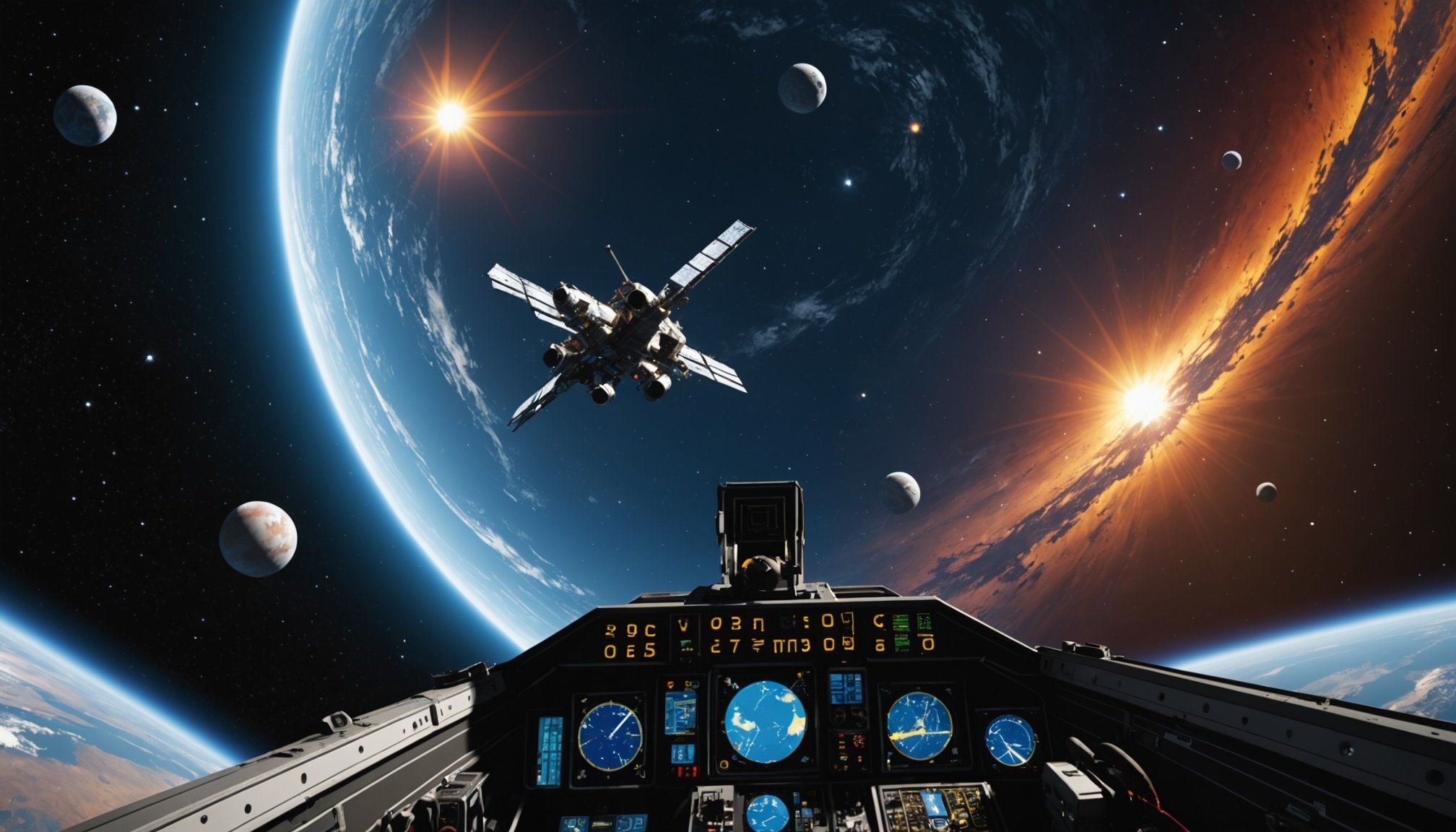Understanding the Importance of Authentic Physics in Space Simulation Games
Realistic physics plays a crucial role in space simulation games, shaping an engaging and authentic user experience. The essence of these games lies in their ability to mimic the complexities of outer space, harnessing the laws of physics to create gameplay that feels both challenging and rewarding. This authenticity not only enhances immersion but also elevates the educational value of these simulations.
In game development, the inclusion of accurate physics is vital. It ensures that players can interact with the virtual world in ways that parallel real-world experiences. For example, the precise calculation of gravitational forces, orbital mechanics, and the behaviour of spacecraft can provide a deeper understanding of space exploration, promoting both learning and entertainment. This blend of education with engagement transforms space simulation games into powerful tools for learning about the cosmos.
Also read : Elevate your forest adventure: essential techniques for creating lifelike foliage in exploration games
Moreover, authentic physics contributes significantly to user engagement. When players encounter realistic challenges, such as managing a spacecraft’s trajectory or responding to environmental conditions of outer space, it enhances the game’s replayability and appeal. Hence, game developers invest in simulating realistic physics to captivate players, ensuring a satisfying and intellectually stimulating experience in the vast realm of space simulation.
Challenges in Integrating Authentic Physics
Integrating authentic physics into game design is akin to balancing on a tightrope. Ensuring gameplay remains enjoyable while embedding realistic physics challenges both developers and hardware alike.
Have you seen this : Overcoming obstacles: essential challenges in developing games for hybrid vr and ar platforms
Technical Limitations
When it comes to physics challenges, hardware constraints play a significant role. The performance of physics calculations can be severely impacted, throttling the realism achievable. Graphics processors often take the brunt as they struggle with high-complexity physics simulation accuracy. Nonetheless, solutions such as optimizing physics engines can ease these pressures. Utilizing streamlined algorithms, developers can achieve more with less, mitigating some integration issues effectively.
Balancing Realism with Gameplay
Striking the right balance between realism and gameplay is crucial. While some players relish complexity, others may find overly intricate mechanics off-putting. Game design needs to tread carefully, maintaining equilibrium to avoid alienation. Implementing techniques within the game design itself can preserve this balance, ensuring everyone stays engaged.
Programming Complexities
Behind the scenes, programming plays its own demanding role. Developers face mathematical challenges with the models they deploy for physics simulations. Common challenges surface regularly—be it computational load or precision. Adopting effective coding practices remains vital. Simplifying algorithms and employing clean, efficient code aids in navigating these integration issues and enhances the overall user experience.
Successful Examples of Authentic Physics Integration
Diving into the world of space simulation games, some standout case studies have set a benchmark in the industry. Kerbal Space Program, for instance, is renowned for its realistic physics engine, providing an inspiring design inspiration for many game developers. By simulating rocket physics with impressive accuracy, this game allows players to learn through trial and space-bound errors.
In examining successful simulations, Elite Dangerous emerges as another exemplary title. It impresses with its vast, procedurally generated galaxy and attention to astronomical detail. The use of real-world star catalogues ensures players experience a cosmos with adherence to scientific principles.
Analysis of Techniques
One key aspect of the realism in these games is their use of physics simulations derived from actual formulas, governing elements such as gravitational forces. Mathematics and computer algorithms work in harmony to replicate celestial mechanics. This approach ensures an almost educational experience, without sacrificing engagement or fun.
Learning from these outstanding case studies, new projects can benefit immensely. Emphasising precision in physics integration not only enhances realism but also boosts player immersion. Developers should consider exploring such successful techniques early in the design phase to deepen the gaming narrative and offer players a more authentic space exploration experience.
Practical Strategies for Game Developers
Navigating the complex terrain of game development strategies requires mastering both implementation techniques and best practices. By focusing on these aspects, game developers can elevate gameplay and enhance user experience.
Prototyping and Testing
Iterative development is crucial for effectively integrating physics into games. This approach involves creating prototypes that allow developers to test and refine game mechanics repeatedly. It ensures the physics behave as intended in various scenarios, fostering an engaging and realistic gaming environment. Effective testing methods are imperative; developers might use automated scripts to simulate multiple player interactions or gather user feedback to further refine mechanics. Leveraging this input, developers can improve gameplay significantly.
Collaborating with Physicists
Consulting with physics experts can be immensely beneficial during game development. These collaborations can enhance the accuracy of game mechanics and offer fresh insights into potential mechanic refinements. Establishing partnerships with educational institutions not only provides access to specialized knowledge but also opens avenues for richer game experiences. Real-world examples, such as “Kerbal Space Program,” demonstrate how successful collaborations can profoundly impact the game’s authenticity and player satisfaction.
Utilizing Physics Libraries
To best integrate physics into their projects, developers should carefully consider popular physics engines and libraries. Selecting the right engine involves evaluating factors like performance, ease of integration, and community support. Open-source options like Bullet Physics offer flexibility, whereas proprietary choices like Havok might provide advanced features fit for complex projects.
Future Trends in Space Simulation Physics
As technology advancements continue to reshape the landscape of space simulation games, the coming years promise exciting developments. One key trend is the incorporation of emerging technologies such as virtual reality, which enhances the user experience by providing a more immersive environment. These advancements are crucial in driving the gaming evolution towards ever more realistic and interactive simulations.
A significant area of development is the integration of sophisticated physics engines, crucial for creating genuine in-game dynamics. With these, the future simulation games might accurately replicate celestial mechanics, enabling players to experience complex gravitational interactions and orbital trajectories. This not only enhances authenticity but also increases engagement in space simulations.
Predictions indicate that AI will play a pivotal role in enhancing realistic physics simulations. By using AI algorithms, games can generate more believable environments and responsive interactions. For example, AI could personalize player experience by adjusting difficulty levels based on player skill, adapting the game world dynamically.
Overall, future trends in space simulation physics are poised to provide richer, more captivating experiences. These evolutions are expected to open new dimensions for players, making each journey through the cosmos uniquely thrilling and educational. The aforementioned advancements highlight the path being charted for the next generation of space simulation games.






